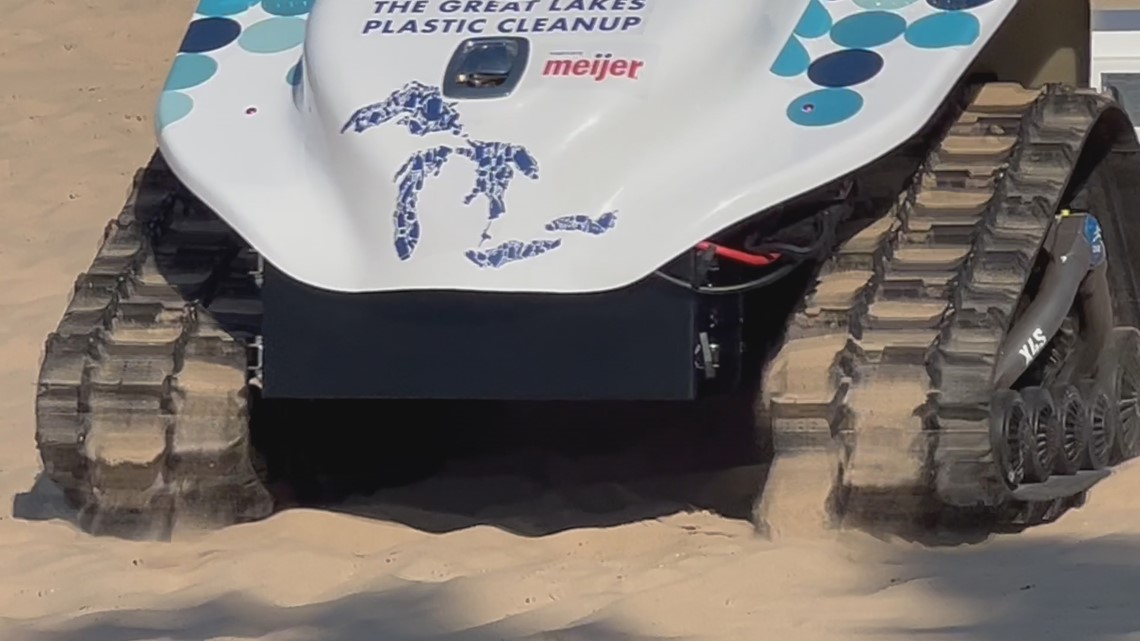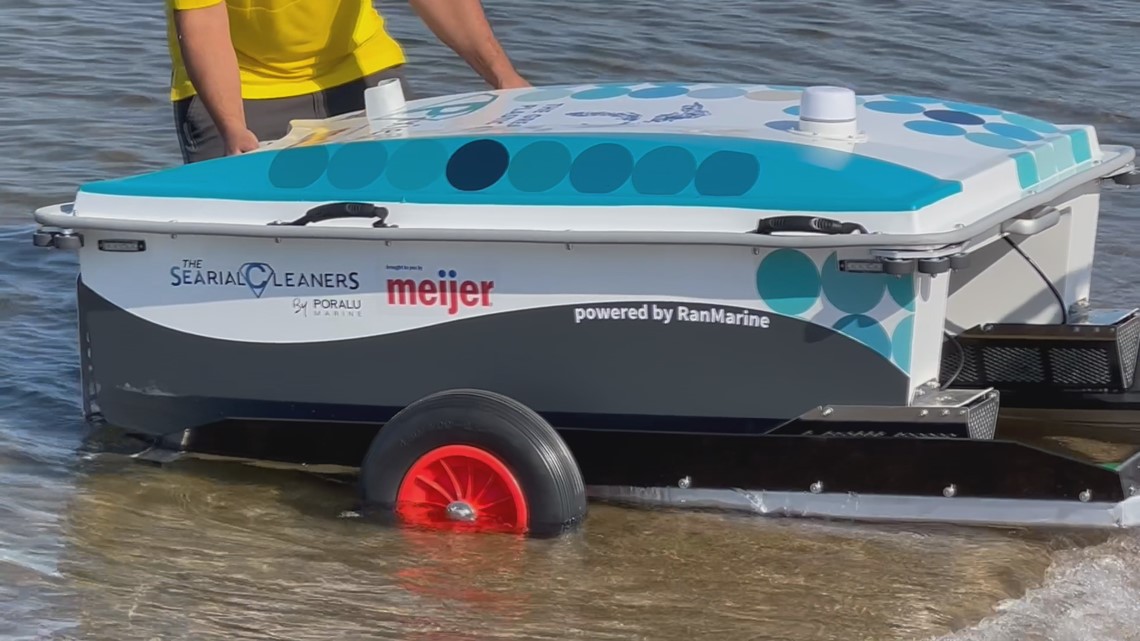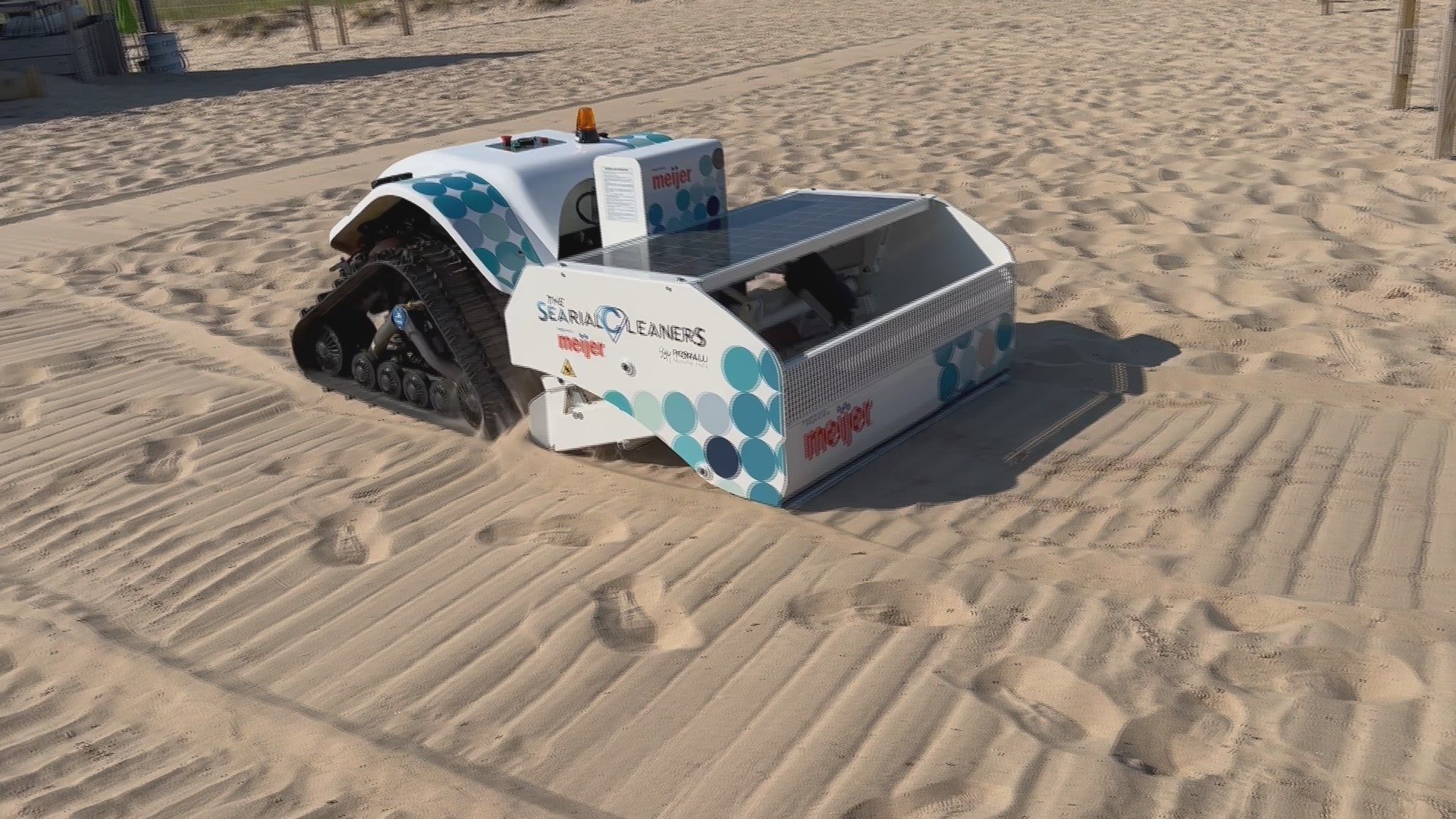MUSKEGON, Mich. — Tens of millions of people depend upon the water that comes from right here in our backyard.
Yet, all of that's under threat from a growing plastic problem.
Studies show up to 22-million pounds of plastic enters the Great Lakes basin annually.
A one-of-a-kind partnership to begin the cleanup got its start in Muskegon this morning when two plastic collecting drones hit the beach and water.
With names like BeBot and Pixie, these guys sound like they’re straight out of Transformer, but the work they’ll be doing is very real.
“We have an awesome responsibility to be good caretakers of such precious resources for the enjoyment of residents and visitors alike,” Mayor Ken Johnson addressed the crowd.
The effort got its grand reveal at the Deck during a Tuesday press conference on Pere Marquette Beach.
A $1 million gift from Meijer to the Council of the Great Lakes Region will fund the project.
A partnership between the retailer, conservationists and water educators.
“Plastic pollution in the Great Lakes is a critical issue,” Erik Petrovskis, Meijer’s director of environmental compliance and sustainability related. “We have to eliminate plastics at the source, as well as doing these sorts of beach cleanups to get them out of the environment.”
Using first-of-its-kind technology, to be deployed in clean-up projects between Michigan, Ohio and Wisconsin.
Gautier Peers’ company manufactures the devices for a growing, global client list.
“There's a huge difference between how the situation was 35 years ago and the situation today,” Peers noted. “So there's a need for technologies for that.”
The cleanup effort in Muskegon will utilize two state-of-the-art drones.
The solar-powered BeBot uses its tank treads to effortlessly roll through the sand, sifting through the square footage of an average home about 15 times every hour.


What it picks up along the way is later unloaded through a hatch in the back, where the trash is separated and sorted.
Its aquatic counterpart, the remote-controlled Pixie Drone hums down the shoreline, swallowing-up any piece of floating debris – up to 200 pounds in one session--from old water bottles, to wrappers and bottle caps.


The drone simultaneously samples the water and once collected, the data’s then piped over to researchers at Grand Valley State University’s Annis Water Resources Institute for analysis.
“It's our mission, all of our missions in order to maintain and make sure that they're sustainable for future generations, as well as today's generation,” GVSU’s Dr. Alan Steinman explained. “We’re being able to actually implement this kind of activity.”
The partnership will ultimately see devices deployed to more than a dozen facilities across the Midwest.
►Make it easy to keep up to date with more stories like this. Download the 13 ON YOUR SIDE app now.
Have a news tip? Email news@13onyourside.com, visit our Facebook page or Twitter. Subscribe to our YouTube channel.

